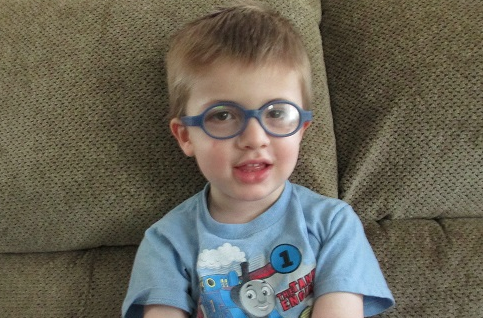Does My Child Need Vision Services?
A teacher of the visually impaired works with children who have visual loss or a brain based Cortical Visual Impairment (CVI). They assess functional vision and help optimize the use of vision as well as the use of other senses.
Teachers of the visually impaired address areas of early childhood development in which vision loss has an impact and assist in making environmental adaptations in daily routines. They work on beginning literacy skills for future Braille and print readers by developing strong tactile, visual, and listening skills.
In addition, a teacher of the visually impaired will also interpret eye reports and help the family understand the child’s eye condition.
Children’s Vision Takes Time to Develop
During the first months of life, your child’s eyes are experiencing the world for the first time, and their primary focus is only 8 to 10 inches away (about the distance to a parent’s face when being held.)
At first, baby’s eyes may appear to be unfocused, to wander, or be crossed. It’s not an early concern, as your baby won’t begin to follow moving objects and reach for things until about 3 months of age.
Between 5 to 8 months, depth perception and color vision are improving, and eye-body coordination skills start to play a role as your baby learns to crawl.
For the rest of their first year, baby learns to grasp and play with objects and makes progress toward his or her first steps. By now, your child should be able to judge distances and throw objects with some precision.
Between 1 and 2 years of age, hand-eye coordination and depth perception are usually well developed, and your child should be able to recognize familiar objects, faces, pictures in books, and to explore their world visually and physically with confidence.
Your Child’s First Eye Exam
Children should have their first comprehensive eye exam at 6 months of age. An optometrist or ophthalmologist is trained to check for the development of visual acuity, proper eye movement and eye teaming skills, as well as for eye health.
They’ll look for issues like amblyopia (lazy eye), strabismus (crossed or misaligned eyes), and focusing problems.
Causes of vision impairment in children that your eye doctor can screen for include:
- Cortical Visual Impairment. CVI is a neurological disorder with a variety of causes ranging from asphyxia (oxygen deprivation) to injury and infection.
- Retinopathy of Prematurity (ROP) is an eye disorder affecting premature infants.
- Optic Neve Hypoplasia (ONH) is vision impairment resulting from an underdevelopment of the optic nerve during pregnancy.
- This group of conditions is characterized by a loss of the body pigment melanin, including the skin, hair, and eyes. Since melanin is important to the development of the retina, visual impairment can result.
Is Your Child’s Eyesight at Risk?
Why is detecting early vision problems so important for your child?
Infants start to engage with their world from day one, and their vision is a primary tool for learning about that world. When their eyesight is impaired, it is a cause for immediate concern.
Just a few of the issues related to early childhood vision problems include:
- Development of poor hand-eye coordination.
- Delays in cognitive development.
- Social problems in recognizing faces and emotional responses.
- Inability to focus at school and low reading comprehension.
Of course, it takes some care, observation, and understanding to know how or when your child might be having vision problems.
Warning Signs to Look for at Home
While it may be difficult to know exactly how your child is seeing the world, there are some easy to recognize signs that all parents can be on the watch for.
- Red eyes and encrusted eye lids are often a sign of infection.
- Continually teary eyes may point to blocked tear ducts.
- Extra sensitivity to light may mean there is increased pressure in the eye.
- Pupils that are unequal in size or that appear white instead of black.
- Repeated shutting or covering of one eye.
- Lack of a growing visual interest and engagement with the environment is likely to signal some visual impairment or early developmental problem.
- Repeatedly bumping into and knocking things over; squinting, blinking, and eye-rubbing; sitting too close to the TV; and generally avoiding activities that rely on good vision.
Would you like to learn more about childhood vision problems? Call TEIS Early Intervention at 412-271-8347 or Text INFO to 412-543-8398 During Regular Business Hours (8:00 am to 4:00 pm, M-F).





